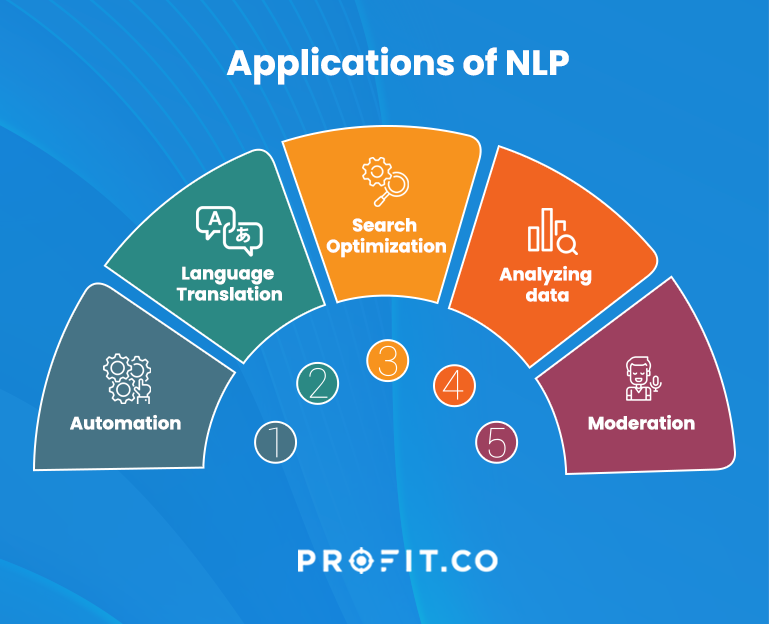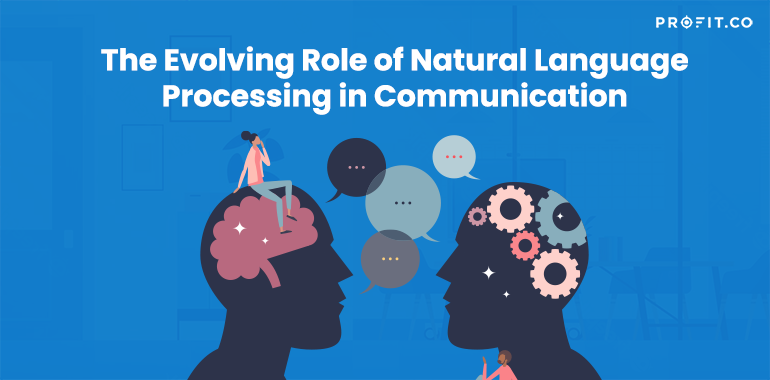However, what sets these AI-driven programs apart in delivering consumer satisfaction is their ability to simulate natural conversation—a feat made possible by Natural Language Processing (NLP). In the modern business landscape, NLP is pivotal in facilitating seamless communication, but its potential extends far beyond. As we navigate the intricate realm of AI, understanding the underlying framework of NLP is crucial for harnessing its capabilities to advance our professional endeavors.
“AI is one of the most profound things we’re working on as humanity. It’s more profound than fire or electricity and the internet.”
What is Natural Language Processing?
Natural Language Processing refers to a subject within computer science, specifically Artificial Intelligence. It enables AI to understand, manipulate, and create human language. The ultimate goal here is to allow AI to use language the same way humans can. It does this by combining several different fields, including statistics, machine learning, and other learning models.
Likely, the average person has already interacted with NLP, though unknowingly. Digital assistants, such as Siri, Cortana, and Alexa use NLP to make user interaction smooth and easy and are constantly improving as they are given more input. The global natural language processing market size was valued at USD 27.73 billion in 2022 and is expected to expand at a compound annual growth rate (CAGR) of 40.4% from 2023 to 2030.
You can also find NLP being used for applications like searching the web, spam filters, automatic translation, and grammar and spell checking. Basically, if you use any program that has to deal with a human language, chances are NLP is being implemented in some capacity.
Ready to explore how Profit.co can improve your communication strategy?
A Brief History
NLP has a varied origin, as its roots lie in the studies of language itself before even its computational aspect surfaced. One such person who studied it was Ferdinand de Saussure, a Swiss linguistics professor in the early 1900s. It was Saussure who introduced the idea of “language as a science,” which eventually led to the idea of NLP. Later we would see the works of Alan Turing in the 50s, who wrote a paper describing an ideal test to recognize a thinking machine. Essentially, the machine should be able to imitate a human conversation so perfectly that it is indistinguishable from the real thing. All of these theories on what should be the ideal machine intelligence eventually informed the thinking behind AI and NLP.
Applications
Today, NLP is the driving force behind many human-machine interactions, with the following being their most widely used applications:

Automation
As with most forms of AI, NLP is greatly useful for simplifying complex tasks. In this case, chatbots would be the most familiar example. Being able to quickly respond to user needs is essential for customer engagement, but you might not have the workforce needed for large-scale interaction. Chatbots use NLP to model simple enough responses that allow basic questions to be immediately answered and filter for only complex needs. This saves time and costs in the long run, justifying the expense you would incur to install it.
Language Translation
NLP helps machines better understand the nature of your requests, meaning you can ask broader questions when researching a topic. For example, region-specific language. Nuance and context change across countries, and it can be complex to program for every individual interaction possible. NLP can contextualise a user’s response, assuming enough data has been fed. So you might feed in a more colloquial language common to your area, and the search engine will intuitively understand what you are asking.
The advancements in Natural Language Processing (NLP) have significantly improved the capabilities of online translation tools. These modern solutions offer more precise translations and maintain grammatical integrity, greatly aiding cross-language communication. NLP streamlines the translation process from foreign languages into your native tongue, thereby enhancing understanding and interaction across linguistic barriers.
Search Optimization
Search engines already use NLP to scan and process which websites have the most relevant data for the query posed. Conversely, if a business uses NLP to figure out the top results for a certain type of query, it would be better able to optimize its content for more traction. For instance, Amazon’s search function enhances the shopping experience by employing NLP to grasp the intent behind your queries, not just the keywords. If you search for “birthday gift for 10-year-old,” Amazon doesn’t just look for those specific words. Instead, it interprets the intent and suggests a variety of age-appropriate gifts, from toys to books.
Analyzing Large Data
As NLP can learn context and specificity, it can greatly simplify the process of reviewing many documents and other records. This would be especially beneficial to those who work in fields such as law or the government. Instead of manually reviewing every possible document, you can choose relevant keywords that will find exact matches as well as those possibly related. Using language to analyze data makes it easier for everyone in an organization to access and understand analytics, not just analysts and software developers.
Moderation
This use is most useful for social media platforms. Rather than banning arbitrary words, it is more important to recognize harmful language. NLP can help moderation by processing larger amounts of data and identifying inappropriate language.
NLP tools can efficiently sift through vast amounts of data from customer feedback on platforms like social media, review sites, and mentions of the brand elsewhere online. This analysis enables companies to gauge the effectiveness of marketing strategies or identify emerging issues among their customer base.
This, in turn, informs decision-making for improved service and customer experience enhancement. NLP aids text analytics further by extracting key phrases and identifying patterns within the sea of unstructured text, broadening its utility in digital environments.
These uses all illustrate how NLP can improve the very nature of online engagement. More specifically, it will change the way we communicate.
Changes to Communication
The internet has fundamentally changed the way we communicate in the modern world, allowing us to bypass distance and time. This is especially true for the workplace where efficiency is valued above all else. Consider when most workplaces had to accommodate mandatory quarantine, meaning almost all employees worked from home. Emails and video calls became even more essential, with employers finding the best ways to retain their previous levels of communication in a changed environment. So what does NLP mean for communication in the future?
Currently, the greatest challenge for communicating with AI is the intricacies. NLP cannot yet process things like accents or emotions. We put a lot of emphasis on the way we write a message, sometimes more than what the message contains. Passive aggressiveness, frustration, formality, and more, are all difficult to quantify exactly without a human being confirming each situation individually. Even then, interpretations can vary for most people, meaning there is no absolute data for NLP to learn from.
However, if these challenges are overcome, it means NLP will allow for more personal and compassionate conversations. It is easier to retain customers with the personal human touch. Still, if AI conversations begin to show the intricacies we expect from normal human conversation, it will enable businesses to completely change the way they engage with customers.
An obvious usage is in the customer service industry. Advanced NLP can allow communication to transcend cultural and local language barriers, meaning better integration worldwide. Different cultural backgrounds usually make it very hard for companies to branch to new countries, but if the customer service segment is already given the necessary tools to communicate effectively with new customers, it removes many of the barriers you would typically expect.
NLP can also be extremely important for another piece of technology, virtual reality. Currently, VR is great for providing a virtual space for people from different areas to connect, with a more physical presence than you would see with traditional online communication methods. NLP can aid in making these connections smoother and more intuitive, opening up even more possibilities for communication with people who don’t even speak the same languages.
Conclusion
Suffice it to say that there is a great opportunity to implement NLP into our communication. Just as the internet revolutionized how people across the world communicate, NLP and AI can do so again. Knowing the basics can help you implement these new systems into your workforce.
Check out the different tools Profit.co offers
Related Articles
-
Status Quo Bias in the Workplace
Is your organization unknowingly sabotaging its own progress? The Status Quo Bias, a subtle yet powerful human tendency, often keeps... Read more
-
Why Communication Styles Matter More Than You Think
Effective communication is the bedrock of organizational success. As a leader, how you listen, speak, and respond profoundly shapes productivity,... Read more
-
How to Drive Engagement & Growth Through Servant Leadership
Tired of battling the constant drain of employee disengagement? The revolving door of turnover isn't just frustrating; it costs your... Read more
-
The Gentle Push: How Smart AI Nudges Boost Team Productivity
Today, simply measuring employee sentiment is no longer enough. The C-suite isn't interested in yet another dashboard or report. They... Read more

